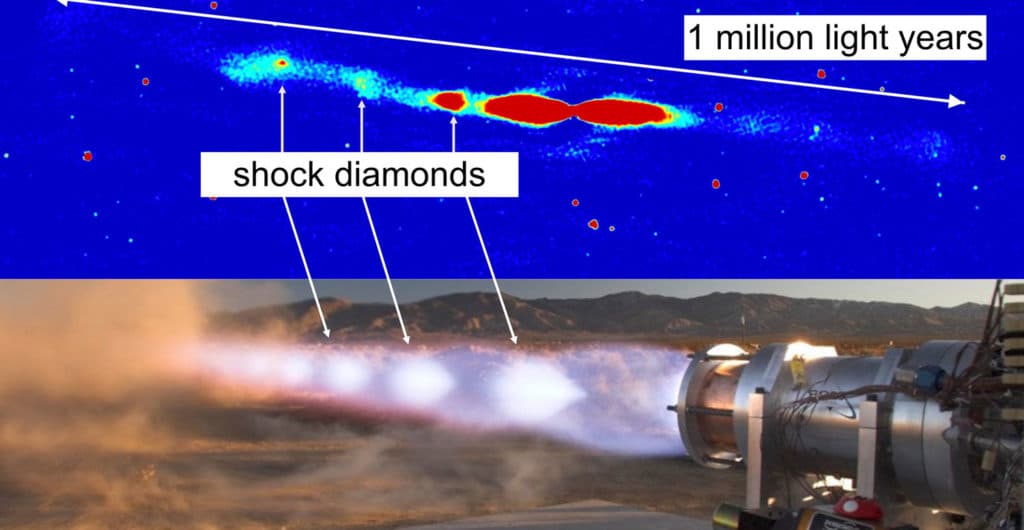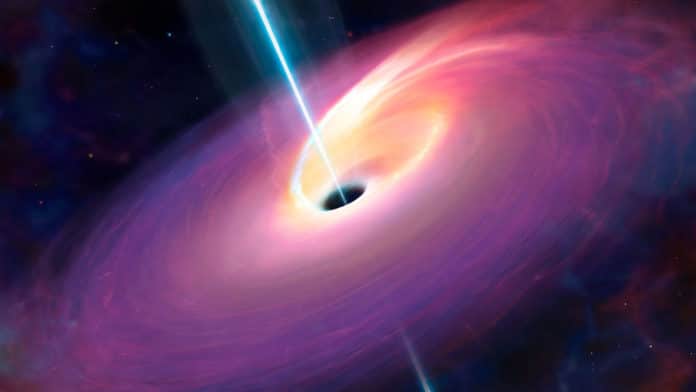Using CSIRO’s Australian Square Kilometre Array Pathfinder (ASKAP), astronomers observed a galaxy NGC2663, almost 93 million light-years away; they discovered one of the biggest black hole jets in the sky.
Astronomers at Western Sydney University detected radio waves that revealed a jet of matter coming out from the galaxy’s central black hole. Spanning more than a million light years from end to end, the jet is about 50 times larger than the galaxy. This high-powered stream of the material comes from a black hole with enormous energy at almost the speed of light.
While astronomers have found such jets before, the immense size (more than a million light-years across) and relative closeness of NGC2663 make these some of the biggest known jets in the sky.
What did astronomers see when the precision and power of ASKAP got a “close-up” view of an extragalactic jet?
Velibor Velović of Western Sydney University explained, “Our Evolutionary Map of the Universe (EMU) survey sees evidence of the matter between galaxies pushing back on the sides of the jet.”
“This process is analogous to an effect seen in jet engines. As the exhaust plume blasts through the atmosphere, it is pushed from the sides by the ambient pressure. This causes the jet to expand and contract, pulsing as it travels.”
“We see regular bright spots in the jet, known as “shock diamonds” because of their shape. As the flow compresses, it glows more brightly.”
Besides jet engines, shock diamonds are seen in smaller, galaxy-sized jets. Astronomers have seen jets slam into dense clouds of gas, enlightening them as they bore through.

Velović said, “However, until NGC2663, we’ve not seen this effect on such enormous scales.”
“This tells us there is enough matter in the intergalactic space around NGC2663 to push against the sides of the jet. In turn, the jet heats and pressurizes the matter.”
“This is a feedback loop: intergalactic matter feeds into a galaxy, galaxy makes a black hole, black hole launches jet, jet slows supply of intergalactic matter into galaxies.”
“These jets affect how gas forms into galaxies as the universe evolves. It’s exciting to see such a direct illustration of this interaction.”
This research has been accepted for publication in the journal Monthly Notices of the Royal Astronomical Society (preprint available here).
Note: The following opinion piece authored by Professor Ray Norris, Professor Miroslav Filipovic, Dr. Luke Barnes, and Ph.D. candidate Velibor Velović, all from the School of Science, was first published with full links on The Conversation.
